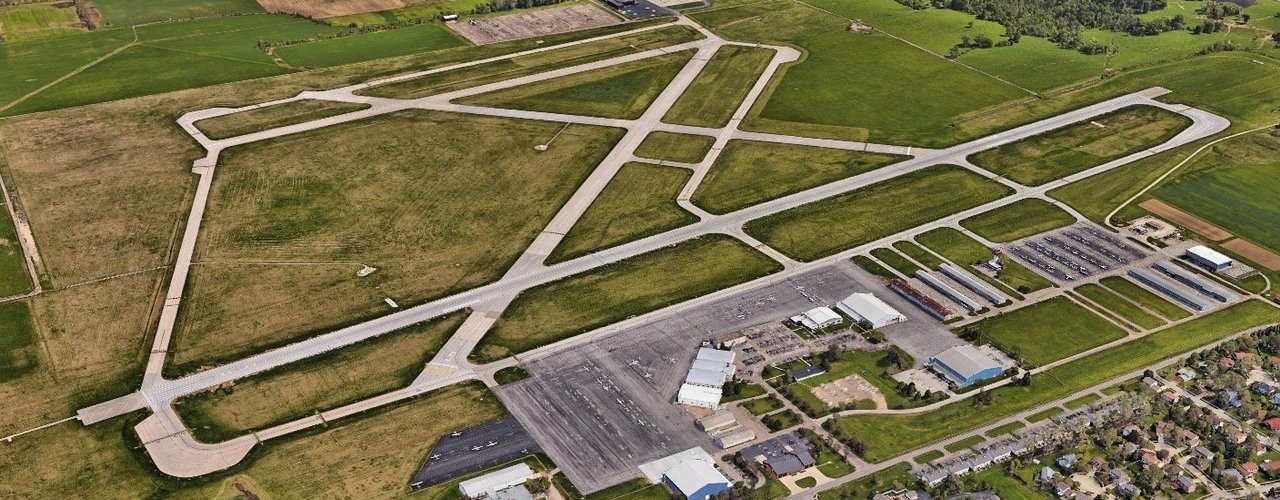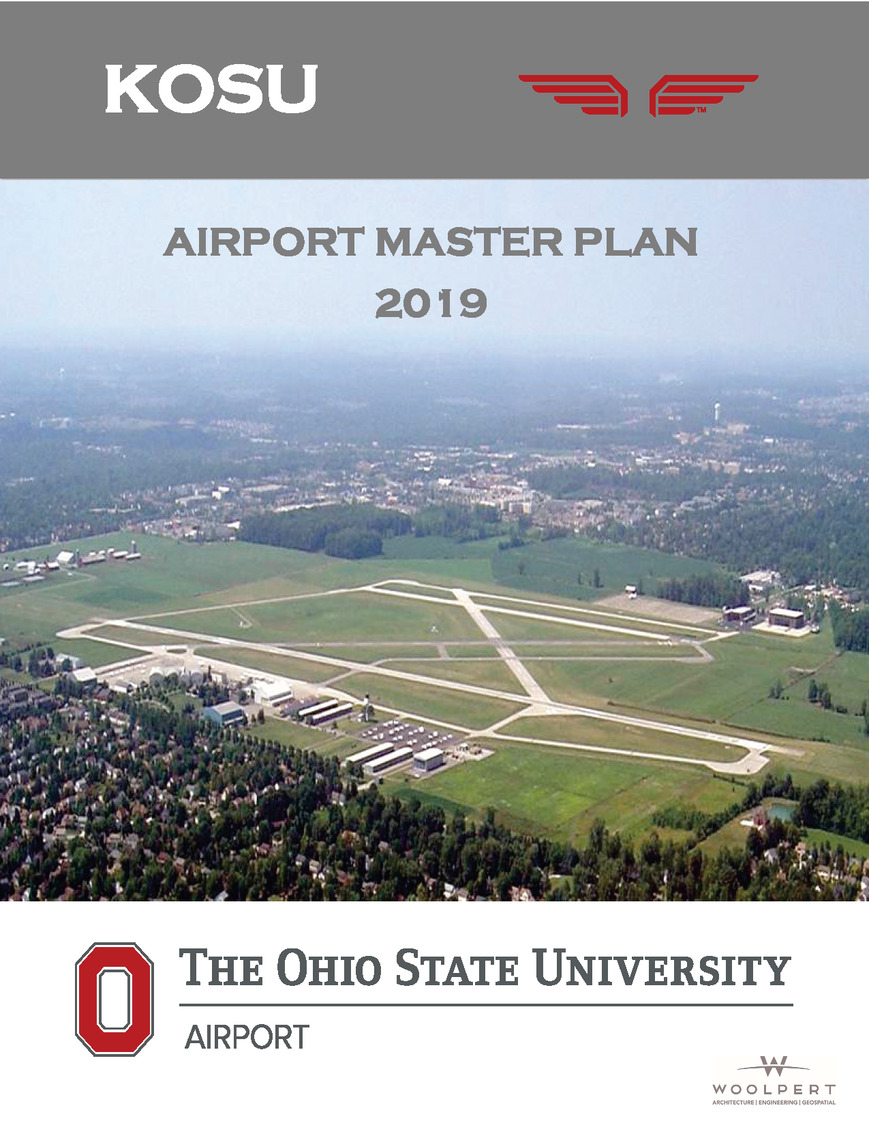KOSU Airport Master Plan

Background
The Ohio State University’s Don Scott Field Airport (KOSU) is home to 200 aircraft and has approximately 75,000 flight operations per year. It is the primary facility, serving the university and the surrounding central Ohio community. KOSU is identified as a national priority general aviation airport by the Federal Aviation Administration, as well as a Part 139 airport that serves as a general aviation reliever for John Glenn Columbus International Airport. The previous master plan for KOSU was completed in 1992. Woolpert was awarded a contract to provide airport master planning and airport layout plan development services for KOSU.
Challenge
KOSU is one of only three airports owned by a tier-one research institution. The airport is part of the larger air transportation and aerospace campus, which has continued need for dedicated aviation academic and research support buildings aimed at enhancing aviation, aerospace education, and research. There were also business aircraft intermingling with student traffic, which added to the complexity of this project. The Woolpert team provided all levels of planning support for runway extensions and modifications, taxiway improvements, terminal area development, and uncrewed aircraft systems operations integration and support related to the new planned improvements at the airport.
In addition, several communities surrounding the airport opposed any development at the airport. Prior to the master plan project, public outreach was not as robust as was needed to effectively communicate with the community. Therefore, this project required extensive outreach and coordination. A technical advisory committee was created to help communicate information to the community and track feedback. Multiple meetings with university staff were required to coordinate this effort. The university was very committed to engaging the public throughout the project, requiring additional efforts and time by Woolpert staff to ensure this was managed effectively.
Solution
The terminal area planning task for KOSU included analyzing the best location for the KOSU flight school aircraft hangar, academic research center and hangar, aircraft maintenance technology center and hangar, and an indoor drone flight facility. A runway extension had historically been shown on the previous airport layout plan, and Woolpert worked to justify that extension based on current federal guidelines. This effort included analysis of critical aircraft operations by aircraft approach category and design group. Woolpert applied FAA guidance through effective collaboration with the Detroit ADO to the maximum benefit of our clients. In addition, Woolpert provided line-of-sight analysis for students as they traveled from the terminal building to the aircraft for their lessons. We analyzed the walk time necessary and planned where the OSU aircraft would be in relation to the flight school.
Woolpert also analyzed locations for non-academic infrastructure needs, including a transient corporate hangar, T-hangars, and a new corporate hangar campus on the east side of the terminal area. Because of the airport’s FAR Part 139 airport certification status, airport security played an important role in the building location and terminal layout, including controlling airfield entry and exit points and planning appropriate fencing and gates.
Outcome
The master plan and Airport Layout Plan have been submitted to the FAA and final approval is anticipated in July 2022. A cohesive master plan was developed to allow The Ohio State University Airport to accommodate the forecasted growth throughout the 20-year forecast period.
Benefits
The updated ADP enabled USAG-HI to obtain Army leadership approval and move quickly into the design phase for several projects. With funding in place, all components of the WAAF southern flightline currently planned and programmed should be built by 2030. The results from this highly collaborative, two-year planning process illustrate the benefits of performing a detailed analysis of specific requirements and mission needs when an ADP is already in place.

Client
The Ohio State University
Location
Columbus, OH
Services
- Airport master planning
- NEPA environmental review
- UAS conditions inventory and integration requirements
- Aviation forecasting
- Development of airport layout plan set
- Aeronautical survey